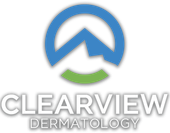Expert Skin Tag Removal in Arvada, Colorado
Remove bothersome skin tags quickly and safely at Clearview Dermatology. Most people agree that skin tags are cosmetically undesirable, and fortunately, we offer effective skin tag removal solutions to eliminate them completely. These common, benign skin growths can be easily removed using professional techniques that provide immediate results with minimal discomfort. Our experienced dermatologists provide expert skin tag removal services across our Arvada, Evergreen, and Littleton locations, helping you achieve smooth, comfortable skin free from these annoying growths.
If you have skin tags, you're definitely not alone - about half of us end up with these little growths at some point. They're totally harmless health-wise, but that doesn't make them any less annoying when they're in places people can see or when they keep getting caught on your clothes or jewelry. We see a lot of patients who are tired of dealing with tags that snag when they're putting on a necklace or getting scraped during shaving.
The great thing about removing skin tags is how simple it usually is. We can often take care of them in just a couple of minutes right during your regular appointment, and you can go about your day normally afterward. Unlike some other skin treatments where you need to come back multiple times, skin tags are usually a one-and-done deal - once they're gone, they're gone.
Understanding Skin Tags: What They Are and Why They Form
Skin tags, medically known as acrochordons, are small, soft, benign growths that hang from the skin's surface by a thin stalk called a peduncle. These harmless growths consist of blood vessels and collagen fibers surrounded by an outer layer of skin, creating those small, flesh-colored or slightly darker protrusions that can be so bothersome.
Most skin tags are quite small, typically measuring just two to five millimeters in size, though some can grow larger over time. They have a soft, flexible texture and are usually flesh-colored, brown, or slightly darker than your surrounding skin. What makes them particularly annoying is how they can catch on clothing, jewelry, or razors, sometimes causing irritation or even bleeding.
Skin tags typically develop in areas where skin rubs against skin or clothing, which explains why they're most common around the neck and collar areas, underarms and armpit region, groin and upper thighs, eyelids and around the eyes, and under the breasts. These friction-prone areas provide the perfect environment for skin tag formation.
Several factors contribute to skin tag development, including friction from clothing or skin-to-skin contact, hormonal changes during pregnancy or menopause, genetic predisposition and family history, age-related skin changes, diabetes and insulin resistance, and weight fluctuations. Understanding these factors helps explain why some people are more prone to developing skin tags than others.
When to Consider Professional Skin Tag Removal
While skin tags are medically harmless, there are many practical reasons why patients choose to have them removed. Cosmetic concerns top the list, especially when skin tags develop in visible areas like the neck, face, or arms. Many patients feel self-conscious about their appearance and prefer to have these growths eliminated for aesthetic reasons.
Physical discomfort is another common motivation for removal. Skin tags can become irritated from clothing or jewelry, cause pain when they get caught or twisted, bleed from accidental trauma, or interfere with daily activities like shaving around the neck or underarms. Some patients also have hygiene and practical concerns, finding that skin tags make it difficult to clean certain areas properly or interfere with clothing fit.
Even though skin tags are benign, some patients simply find them generally annoying or bothersome and prefer the peace of mind that comes with having them removed by a professional.
Professional Skin Tag Removal Methods
We have a few different ways to get rid of skin tags, and we'll pick whichever one makes the most sense based on what size they are, where they're located, and how many you want removed. Sometimes we'll even use different approaches for different tags during the same visit if that works better.
Most of the time, we just snip them off with small surgical scissors - it's quick, clean, and gets the job done right away. People are usually amazed at how fast it is and how little it bothers them. You walk out without the skin tag, and there's really no recovery time needed.
If you have several small tags clustered together, we might use electrocautery instead. This uses a tiny electrical current to remove the tag while sealing off any small blood vessels at the same time, so there's virtually no bleeding. It's particularly handy when we're dealing with multiple little tags in one area.
Another option is freezing them off with liquid nitrogen. This kills the tag, and it falls off on its own over the next week or two. Some people prefer this method because there's no cutting at all - we just apply the cold treatment and let nature take its course.
It is important to note that most insurances do not cover skin tag removal as it is considered by them to be cosmetic.
What to Expect During Your Skin Tag Removal
Your skin tag removal experience begins with a brief consultation and assessment where we examine your skin tags, discuss your preferences for removal methods, select the most appropriate technique for each growth, and explain the procedure process. Most skin tag removals can be performed immediately during your consultation visit.
The removal process itself is remarkably simple. We'll cleanse the treatment area thoroughly, apply local anesthesia if needed (though it's usually unnecessary for small tags), perform the quick removal using your chosen technique, and apply pressure to control any minor bleeding. The entire process typically takes just a few minutes per skin tag.
Once we're done, taking care of the area is pretty straightforward. We'll tell you exactly what to do, but it's usually just keeping the spot clean and dry, maybe putting a small bandage on it if we think it needs one, and keeping an eye out for any signs of trouble - though problems are really uncommon with skin tag removal. You can go right back to doing everything you normally do, and if a little scab forms, it'll come off on its own in a few days without you having to do anything special.
Preventing Future Skin Tags
There's no foolproof way to prevent skin tags, but there are some things that might help cut down on new ones showing up. Keeping your weight in a healthy range can reduce how much your skin rubs together in places like your underarms and groin. Wearing clothes that fit well and breathe can also help - you want to avoid anything that's constantly rubbing or creating friction. Try to keep areas where skin touches skin as dry as possible, especially during hot weather or after exercising.
If you have diabetes or other health issues, managing those well might help too, since they can affect how your skin behaves. And when you come in for your regular skin checks, we can spot new skin tags while they're still small and easy to deal with, before they get big enough to really bother you.
Treatment Costs and Expectations
Skin tag removal procedures are cosmetic treatments that are typically not covered by insurance. However, the cost is quite reasonable, especially considering the immediate and permanent results. During your consultation, we'll provide transparent pricing based on the number and size of skin tags you want to have removed.
Most patients find that the cost is well worth the immediate improvement in comfort and appearance. Since the removal is permanent for each treated skin tag, it's truly a one-time investment in your comfort and confidence.
Frequently Asked Questions
Does skin tag removal hurt?
Most patients experience minimal discomfort, often described as a quick pinch. Local anesthesia is rarely needed for small skin tags.
Will skin tags grow back after removal?
Once removed, individual skin tags don't grow back. However, new skin tags may develop in the same or different areas over time.
Can I remove skin tags at home?
While home removal methods exist, professional removal is safer and more effective, with better cosmetic results and lower risk of complications.

Contact Clearview Dermatology
Ready to eliminate bothersome skin tags quickly and safely? Contact
Clearview Dermatology
today to schedule your skin tag removal consultation and say goodbye to these annoying growths for good.





